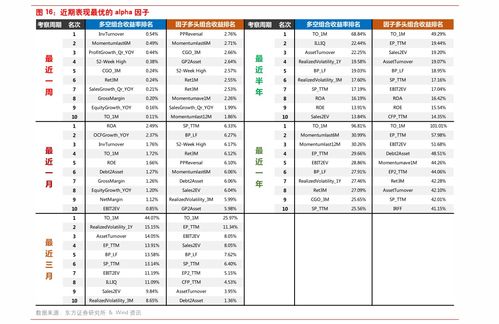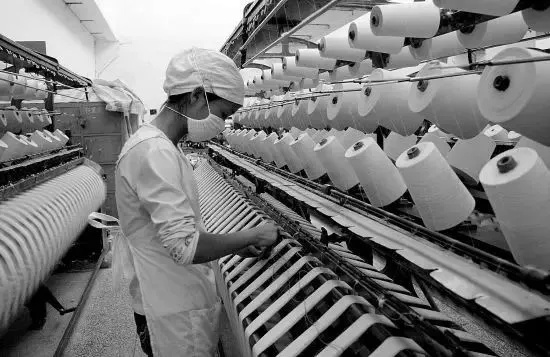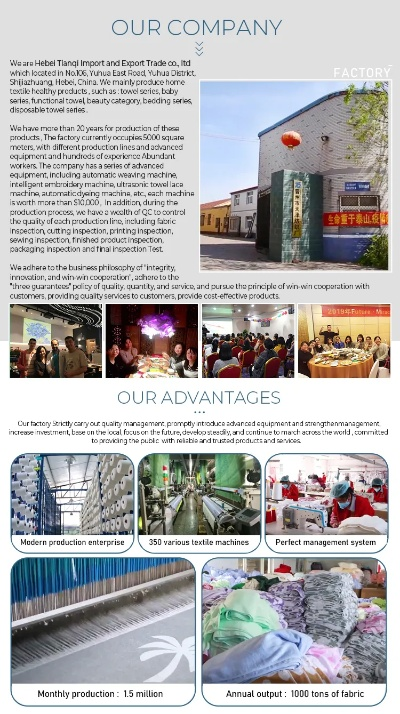纺织品厂宿舍防疫措施指南
: Guidelines for Epidemic Prevention Measures in Textile Factory Dormitory,Abstract:,The COVID-19 pandemic has significantly impacted the global textile industry, with many factories facing challenges in implementing effective epidemic prevention measures. To address this issue, this paper proposes a comprehensive set of guidelines for epidemic prevention and control in textile factory dormitories. The guidelines emphasize the importance of maintaining cleanliness and hygiene, implementing regular disinfection procedures, encouraging social distancing, and implementing strict screening and quarantine protocols for returning workers. Additionally, the guidelines highlight the need for regular health monitoring and education on COVID-19 prevention and control among residents. By implementing these guidelines, textile factories can effectively prevent the spread of COVID-19 within their dormitories, ensuring the safety and well-being of both employees and residents.
Introduction: In the face of the ongoing global health crisis, ensuring the safety and well-being of our employees is paramount. This guide aims to provide comprehensive information on the various measures that can be taken in textile factory dormitories to prevent the spread of COVID-19. By following these guidelines, we can work together to create a safer working environment for everyone involved.

Table of Contents:
- Introduction
- Personal Hygiene and Disinfection
- Social Distancing Practices
- Regular Cleaning and Sanitization
- Use of Masks and Protective Gear
- Handwashing Protocols
- Quarantine and Testing Requirements
- Communication and Information Sharing
- Training and Awareness Campaigns
- Emergency Response Plan
Personal Hygiene and Disinfection: To prevent the spread of COVID-19, it is crucial to maintain good personal hygiene practices at all times. This includes regularly washing hands with soap and water for at least 20 seconds, using hand sanitizers when soap and water are not available, and avoiding touching one's face, especially the eyes, nose, and mouth. Additionally, disinfecting frequently touched surfaces such as doorknobs, light switches, and countertops can significantly reduce the risk of transmission.
Social Distancing Practices: In order to minimize the risk of close contact with others, social distancing should be practiced at all times. This means maintaining a distance of at least 6 feet from others when in public spaces or common areas. It is important to avoid large gatherings and limit the number of people in shared spaces. If possible, try to work from home if possible, as this will further reduce the need for physical interaction.
Regular Cleaning and Sanitization: Regular cleaning and sanitation are essential in keeping the dormitory clean and free of viruses. This includes wiping down commonly touched surfaces with disinfectant wipes or spray, disinfecting doorknobs, light switches, and other hard-to-reach areas, and thoroughly cleaning floors, countertops, and other surfaces that may have been touched by someone who has been diagnosed with COVID-19.
Use of Masks and Protective Gear: Wearing masks and protective gear is a simple yet effective way to prevent the spread of COVID-19. Masks should cover both the nose and mouth and should be replaced after being wet or soiled. Protective gear, such as gloves and gowns, should also be worn when necessary. These items should be disposed of properly to prevent contamination of the environment.
Handwashing Protocols: Handwashing is an essential part of daily hygiene routines. It is recommended to wash your hands with soap and water for at least 20 seconds before eating, after using the restroom, and after being in public spaces. If soap and water are not readily available, use hand sanitizer instead. It is important to avoid touching your face, especially the eyes, nose, and mouth, as this can increase the risk of transmitting the virus.
Quarantine and Testing Requirements: If a person tests positive for COVID-19, they should immediately self-isolate at home and seek medical attention. The infected individual should also inform their employer about their diagnosis so that appropriate measures can be taken to prevent further spread. It is important to follow the guidance of local health authorities and stay updated on any changes in regulations.
Communication and Information Sharing: Effective communication is key in preventing the spread of COVID-19. Employers should communicate regularly with their employees about the latest guidelines and requirements related to the pandemic. This includes providing updates on testing options, quarantine requirements, and any other information that may impact employee safety. Employees should also be encouraged to share any concerns or questions they may have about the pandemic with their employers.
Training and Awareness Campaigns: Providing regular training and awareness campaigns can help employees understand the importance of following safety guidelines and staying informed about the pandemic. This can include workshops on handwashing techniques, social distancing practices, and how to properly dispose of used masks and protective gear. Encouraging employees to participate in these campaigns can help build a culture of safety and responsibility within the workplace.
Emergency Response Plan: It is important to have an emergency response plan in place in case of an outbreak in the dormitory. This plan should include clear instructions for how to respond to an outbreak, such as identifying potential sources of infection and implementing isolation procedures. Employers should also have a designated person responsible for communicating with affected individuals and managing the response efforts.

Conclusion: In conclusion, implementing comprehensive and consistent measures to prevent the spread of COVID-19 in textile factory dormitories is critical to ensure the safety and well-being of our employees. By following this guide, we can work together to create a safe and healthy working environment for everyone involved. Remember, prevention is always better than cure, so let's all do our part in protecting ourselves and each other.
随着全球疫情的持续发展,纺织品厂宿舍的防疫措施显得尤为重要,为了确保员工和宿舍成员的健康安全,纺织品厂采取了多项防疫措施,本文将详细介绍纺织品厂宿舍的防疫措施,并提供相关案例说明。
宿舍防疫措施
人员管理
(1)员工健康状况监测:每日进行员工健康状况监测,包括体温检测、健康码查验等。 (2)宿舍消毒:定期对宿舍进行全面消毒,确保环境卫生。 (3)防疫知识宣传:通过宣传栏、视频等形式,普及防疫知识,提高员工和宿舍成员的防疫意识。
防疫物资准备
(1)口罩、手套等防护用品:确保每位员工配备足够的防护用品,如口罩、手套等。 (2)消毒液、酒精等消毒用品:储备足够的消毒液、酒精等防疫物资。 (3)隔离观察室:设立隔离观察室,用于对疑似感染人员进行隔离观察。
宿舍环境控制
(1)限制人员进出:限制外来人员进入宿舍,确保宿舍内部人员相对固定。 (2)通风换气:保持宿舍通风良好,定期开窗通风,确保空气流通。 (3)防疫宣传标语:在宿舍内张贴防疫宣传标语,提醒员工和宿舍成员注意防疫。

案例说明
以某纺织品厂为例,该厂在宿舍防疫方面采取了以下具体措施:
人员管理
该纺织品厂在宿舍管理方面非常严格,采取了多项措施来确保员工和宿舍成员的健康安全,该厂每日进行员工健康状况监测,并要求员工佩戴口罩和手套进入宿舍,该厂定期对宿舍进行全面消毒,确保环境卫生,该厂还通过宣传栏、视频等形式普及防疫知识,提高员工和宿舍成员的防疫意识。
防疫物资准备
该纺织品厂在防疫物资准备方面非常充足,该厂配备了足够的防护用品,如口罩、手套等,该厂储备了足够的消毒液、酒精等防疫物资,以确保在必要时能够及时供应,该厂还设立了隔离观察室,用于对疑似感染人员进行隔离观察。
宿舍环境控制
在该纺织品厂的宿舍内,采取了多项措施来控制宿舍环境,该厂限制了外来人员进入宿舍,确保宿舍内部人员相对固定,该厂保持了良好的通风换气,定期开窗通风,确保空气流通,该厂还张贴了防疫宣传标语,提醒员工和宿舍成员注意防疫。
纺织品厂在宿舍防疫方面采取了多项措施,包括人员管理、防疫物资准备和宿舍环境控制等,通过严格的管理和充足的准备,该厂成功地保障了员工和宿舍成员的健康安全,纺织品厂将继续加强宿舍防疫工作,提高员工和宿舍成员的防疫意识,确保疫情防控工作取得更好的效果。
Articles related to the knowledge points of this article:
The Status of Ningde Textiles:A Look at Market Changes and Case Studies
Unleashing the Fabric of Luxury with Our Textiles
The Story of a Textile Merchant in the Wenjiang Family Business



